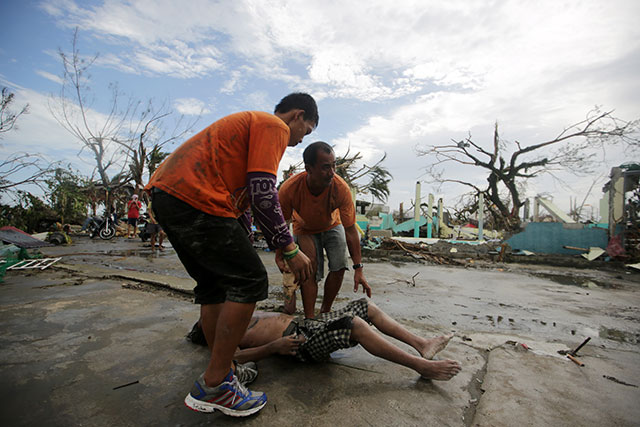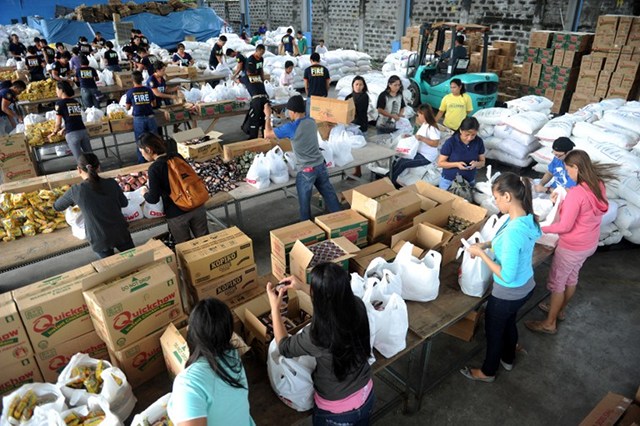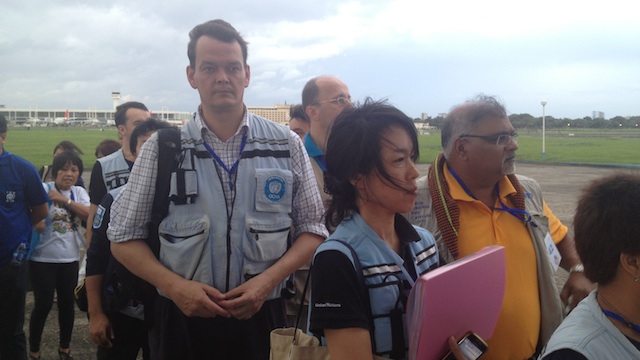SUMMARY
This is AI generated summarization, which may have errors. For context, always refer to the full article.

MANILA, Philippines – Typhoon Yolanda (international codename Haiyan) exited the Philippines Saturday afternoon, November 9, leaving behind a massive trail of death and destruction.
The Civil Aviation Authority of the Philippines said it got reports of 100 people presumed dead but the death toll and number of missing persons are expected to be much higher, as information slowly trickles in. Yolanda is the world’s strongest typhoon for 2013 and is one of the most powerful to make landfall ever.
Energy Secretary Jericho Petilla, who hails from Leyte, was asked in an interview on ABS-CBN how many people died in the coastal town of Palo and surrounding villages and he responded, “I think hundreds.”
Many areas have been out of reach for over 24 hours starting Friday morning as Yolanda destroyed power and communication lines.
Eastern Visayas (Region VIII) is one of the worst hit regions, particularly the islands of Samar and Leyte. Leyte’s capital, Tacloban City, bore the brunt of the typhoon. Its airport was destroyed and only the runway was left intact.
Philippine Red Cross Secretary General Gwendolyn Pang told Agence France-Presse, “We have reports of collapsed buildings, houses flattened to the ground, storm surges and landslides.”
ABS-CBN anchor Ted Failon was in Tacloban and reported that the damage was severe. He described Yolanda as a combination of typhoons Pablo (Bopha) and Sendong (Washi), two of the worst typhoons that hit the Philippines in the past two years.
Failon said the storm surges submerged buildings and even one evacuation center.
“There were so many floating bodies. The government cannot immediately retrieve them all because there are too many. Some of the bodies were washed to the sea. As of this time, 4 pm, they have not yet been retrieved. The problem is, if they are not retrieved until tomorrow, the smell might be a health risk for survivors,” he said in Filipino.

Aid badly needed, looting reported
Access to potable water, food, medicine, health care and electricity was the primary concern of evacuees.
In Ormoc City in Leyte, 62-year-old Belenda Montebon said, “We were very scared, I couldn’t explain it. People were running around because buildings were about to collapse and there was no electricity.”
This is also the case in Tacloban, where supplies are running low. A witness said, “There’s looting everywhere.”
Hospitals in Tacloban are at full capacity, and many of the wounded were left untreated.
Two Philippine Air Force (PAF) C-130 cargo planes flew to Tacloban Saturday morning to bring in relief goods, water purifiers, communication equipment and power generators.
Social Welfare Secretary Corazon “Dinky” Soliman, National Disaster Risk Reduction and Management Council chief Eduardo del Rosario, and PAF Commanding General Lt Gen Lauro Cruz were on board.
Cabinet Secretary Jose Rene Almendras said, “We are at the stage of rescue and relief. Our priority right now is to bring relief goods.”
Iloilo province is also declaring a state of calamity to fast-track the release of calamity funds. On Friday, 4 of its towns were already under a state of calamity: Dumangas, Mina, Janiuay and Zarraga.
To help the victims of Yolanda, see here.

Power, communication, roads key challenges
The loss of power and communication is a major challenge not just for officials but for relatives of residents of many Visayan provinces who have yet to hear from their loved ones.
It was so bad even Interior Secretary Mar Roxas and Defense Secretary Voltaire Gazmin who went to Tacloban could not be reached until Friday afternoon. Officials and journalists are using satellite phones to send reports from the typhoon-hit areas.
The United Nations and Department of Social Welfare and Development disaster augmentation response team set up an emergency telecommunications system for disaster relief and coordination.
The UN Office for the Coordination of Humanitarian Affairs’ Sebastian Rhodes Atampa told Rappler his team planned to “set up basic communications service in preparation for the support teams of international aid agencies.”
Telecommunication companies Globe and Smart began repairing their facilities in Visayas but said it will take two to 3 days to finish the work, depending on the restoration of power. Globe said 53% of its network in Visayas was down.
Transportation is another challenge. Rappler’s Rupert Ambil who arrived in Tacloban’s Daniel Z Romualdez airport, said the lack of public transportation forced relief workers to walk from the airport to the capitol. This makes relief efforts and the delivery of supplies more difficult.
Almendras said even Gazmin and Roxas had to walk around Leyte to conduct initial assessment of the damage because the roads were not passable.

Two command posts
With the extent of the damage, the government is decentralizing the management of the crisis. It set up two command posts: one in Tacloban on the eastern side of Visayas and another in Capiz on the western side.
Gazmin will supervise the Tacloban command post, while Roxas will head the one in his home province of Capiz.
“The area of operation is too wide. It is not efficient for us to manage the crisis on a central location here (Manila),” said Almendras.
President Benigno Aquino III conducted a press briefing Saturday night, saying the government’s priority is to restore power and communication.
Aquino said the government will tap calamity funds, contingency funds and the President’s Social Fund to release resources needed to respond to the disaster.
The President also said the government received offers of aid from Israel, New Zealand and other nations.
The Philippines, which sits on the Pacific Ring of Fire, is prone to various types of disasters. An average of 20 typhoons visit the country every year. – with reports from Agence France-Presse and Ayee Macaraig/Rappler.com
Add a comment
How does this make you feel?
There are no comments yet. Add your comment to start the conversation.